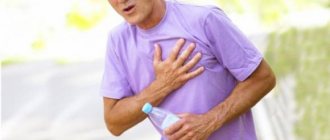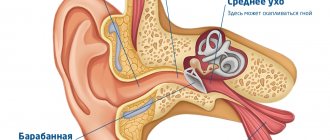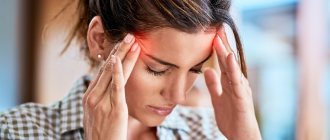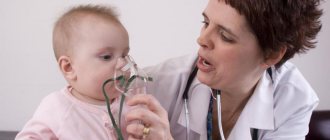Home — For the public
- Map of medical organizations
- Vaccination
- Clinical examination
- Fluorography
- Addresses and opening hours of clinics
- Emergency rooms
- Oncology
- Where to take an HIV test
- Healthy child's office
- Services
- Prevention of CVD
- Disease Prevention
- World Patient Safety Day
- Newspaper "Medical News"
- specialist
- School of Health
— Disease prevention
- HIV infection
- All about vaccination
- All about proper nutrition
- Hepatitis
- Flu
- Dementia
- Schoolchildren's health
- STD
- Tick-borne encephalitis
- Whooping cough
- Measles
- Legionellosis
- Meningococcal infection
- Oncology
- Acute intestinal infection
- Pediculosis
- First aid
- Pneumococcal infection
- Pneumonia
- Prevention of rabies
- Dependency Prevention
- Rotavirus infection
- Diabetes
- Cardiovascular diseases
- Injuries
- Tuberculosis
- Tularemia
- Physical activity
- Obstructive pulmonary disease
- Exotic infections
- Ecology
- Why is swimming in ponds dangerous?
— Cardiovascular diseases — How to quickly lower blood pressure at home
Consistently high blood pressure is a pathological condition indicating the development of a dangerous disease - hypertension. Arterial hypertension is the most common disease in the world. Without timely treatment, hypertension causes complications such as diseases of the cardiovascular system, kidney failure, and loss of vision.
The importance of high blood pressure as a risk factor in the development of cardiovascular diseases increases with age.
Normal blood pressure: what is upper and lower pressure
Blood pressure is measured using a device called a tonometer. A cuff (a wide band that compresses) is placed on the arm. This cuff is attached to a device that measures the pressure inside your arteries. When you turn on the blood pressure monitor, the cuff tightens and then slowly relaxes again. It's quick and painless. Eventually, the device will show your blood pressure.
Blood pressure is measured in millimeters of mercury. The blood pressure reading consists of two numbers, for example 120/75. The first (top) number is the pressure when the heart beats (systolic pressure). The second (lower) number is when the heart relaxes (diastolic pressure).
High blood pressure usually does not cause symptoms. The only way to know if your blood pressure is elevated is to measure it. For example, a value of 110/70 is within the normal range for blood pressure; 126/72 – high blood pressure; value 135/85 – stage 1 hypertension (mild), etc. (see table).
Diet
It is necessary to limit the consumption of salt and foods rich in sodium (fatty meat, seafood, eggs). Alcohol, coffee and energy drinks are also not recommended for consumption. The diet should be enriched with plant fiber and low-fat lactic acid products. It is also necessary to consume more foods rich in potassium (bananas, spinach, garlic).
People with high blood pressure are advised to eat more vegetables and fruits. Photo: prostooleh / freepik.com
Lifestyle
It is strongly recommended to quit smoking. You need to learn to avoid stress and sleep at least 8 hours a day. To strengthen the cardiovascular system, you need to engage in moderate physical activity, since physical inactivity is one of the factors predisposing to the disease. In addition, physical activity combined with a healthy diet helps normalize body weight. This is a relevant question because overweight people are predisposed to hypertension. Nasal sprays should be used with caution - they increase blood pressure (not to mention the ability to cause addiction). It is recommended to take dietary supplements such as L-carnitine, hawthorn extract, coenzyme Q10 and fish oil.
What causes high blood pressure
For most people, there is no single cause for high blood pressure. However, there are a number of factors that increase the likelihood of developing hypertension. These are the so-called risk factors - controllable and uncontrollable. You can adjust:
- . When a person smokes, the incoming nicotine increases blood pressure. Over time, this damages the arteries, increasing the risk of heart attack or stroke.
- Eating excess processed foods and salt. Many processed foods contain a lot of salt. Excess salt intake causes the body to store excess water, which increases blood pressure.
- Drinking excess alcohol too often. Drinking alcohol temporarily increases blood pressure. Excessive alcohol consumption on a regular basis can lead to hypertension.
- Excess weight. Excess weight increases the risk of high blood pressure. Even losing just a few pounds can lower your blood pressure.
- Insufficient activity. If a person moves more and sits less, blood pressure decreases.
- . Hormones produced by the body during stress increase blood pressure. Researchers are still trying to understand the exact link between long-term high blood pressure and ongoing stress.
Uncontrollable risk factors include:
- . If a patient has type 1 or type 2 diabetes, they are twice as likely to develop high blood pressure.
- Kidney disease or other gland problems. Sometimes a serious disease that affects the kidneys, arteries, heart, or endocrine system can cause high blood pressure.
- Aging. Blood pressure naturally increases with age.
- Taking certain medications, such as birth control pills.
- A parent or sibling with high blood pressure. High blood pressure runs in families, so if parents or siblings have problems, the risk of hypertension increases.
Treatment
Almost all patients with hypertension need blood pressure lowering medications. At the initial stage of the disease, with a slight increase in blood pressure, it is sometimes possible to bring the indicators back to normal by changing lifestyle (diet, weight loss, stress management, physical activity). But most patients still require constant medication. If treatment is stopped, high blood pressure, and along with it unpleasant symptoms, and the risk of complications return. During treatment, it is very important to monitor the level of pressure and keep a diary by the patient in which his indicators are recorded. This allows you to select the optimal treatment and accurately assess its effect.
Nowadays, a large number of drugs have been created that reduce blood pressure. Let's look at the main groups of these drugs.
ACE inhibitors
- Enap;
- Diroton;
- Prestarium A;
- Hartil.
They suppress (inhibit) one of the enzymes involved in raising blood pressure and are often used as the first choice drugs when starting treatment for hypertension.
Advantages of this group:
- do not affect the pulse rate (can be prescribed for any pulse rate);
- do not cause an increase in cholesterol and blood sugar levels;
- for diabetes mellitus and chronic kidney disease, they not only reduce blood pressure, but also prevent the development of renal failure;
- these medications are also effective for chronic heart failure.
But this group is not suitable for pregnant (or planning pregnancy) women - it can have a negative effect on the fetus. Also, sometimes, while taking these medications, a dry cough appears. If it greatly bothers the patient, it is necessary to replace it with a drug from another group.
ACE inhibitors are not suitable for pregnant women, because negatively affect the fetus.
Angiotensin receptor blockers (ARBs).
- Lozap;
- Valsacor;
- Aprovel;
- Edarby.
Their mechanism of action is close to the drugs of the previous group, but blocks the process at a different level. In general, they have the same properties as ACE inhibitors. They are often prescribed if a dry cough develops while taking ACE inhibitors, since this group does not have such a side effect.
Beta blockers
- Concor;
- Betalok;
- Nebilet.
They reduce blood pressure by acting on beta-adrenergic receptors of the heart and blood vessels. In addition to lowering blood pressure, these medications slow down the heart rate. They are preferable if you are prone to rapid heartbeats, but if your heart rate is initially low, they are not recommended. When selecting a dose and treatment, pulse control is required (it should be at least 50 beats per minute).
They are also recommended for use when hypertension is combined with coronary heart disease or chronic heart failure. And when combined with bronchial asthma or chronic obstructive pulmonary disease (COPD), they should be used with caution - bronchospasm may increase.
Calcium antagonists
They reduce blood pressure by affecting the calcium channels of cells. They can be used when hypertension is combined with bronchial asthma, COPD, diabetes mellitus, and kidney disease.
Diltiazem, Verapamil, Isoptin (extended form) - also reduce heart rate and can be used as an alternative to beta blockers.
Cordaflex, Normodipin, Lerkamen - without reducing the pulse, they have a vasodilating effect. They are especially effective in increasing diastolic (“bottom”) pressure.
Diuretics
- Hypothiazide;
- Indapamide;
- Arifon-retard;
- Indapamide retard.
Remove excess water and sodium from the body. Especially relevant for people with edema or signs of heart failure. Long-acting indapamide has the least pronounced diuretic effect and minimal side effects, but at the same time it stabilizes blood pressure well.
Diuretics are suitable for people with signs of heart failure.
This group should be used with caution if blood sugar and uric acid levels are elevated.
Centrally acting drugs
- Physiotens;
- Albarel.
They reduce blood pressure by acting on receptors in the brain. As a rule, they are added to combinations of other drugs if the desired effect cannot be achieved.
Combined products
When treating hypertension, combinations of several active ingredients are often used. According to research, the use of combinations is more effective than simply increasing the dose of the drug and causes fewer side effects. Many medications, when used together, complement and enhance each other's effect. That is why many combination drugs have been created, when one tablet contains 2, and sometimes three drugs at once. Their use is both effective and very convenient.
Combinations of 2 drugs:
- ACE inhibitor + diuretic: Enap N, co-diroton, noliprel;
- ACE inhibitor + calcium antagonist: tarka, dalneva, equator;
- angiotensin receptor blocker + diuretic: lozap plus, valsacor N, edarbi clo;
- angiotensin receptor blocker + calcium antagonist: lortenza, vamloset, aprovasc;
- beta blocker + calcium antagonist: Concor AM, Logimax.
Combinations of 3 drugs:
- ACE inhibitor + diuretic + calcium antagonist: co-dalneva, triplixam;
- angiotensin receptor blocker + diuretic + calcium antagonist: co-vamloset, Co-Exforge.
When selecting treatment for hypertension, they usually start with small doses and, if necessary, gradually increase them. You cannot sharply reduce blood pressure to normal if it is initially very high. It is better to first stabilize it at a lower level (for example, if the initial blood pressure is more than 180/100, reach values not exceeding 150-160/90 mm Hg), and after some time try to intensify therapy, taking into account its tolerability.
Finding the optimal treatment is not easy. Even doctors need time for this. The patient's active participation in keeping a diary and taking medications regularly is mandatory. Changing the treatment regimen on your own or stopping it can lead to unpleasant consequences, including complications of hypertension (heart attacks, strokes). If for some reason you change your medication intake, do not hide it from your doctor. Only together can we achieve sustainable results in treatment.
Symptoms of high blood pressure
High blood pressure is often called the "silent killer" because in most cases it causes no symptoms. The only way to find out if it is there is to measure it with a tonometer. High blood pressure can sometimes be accompanied by one or more of the following symptoms:
- Strong headache;
- dyspnea;
- dizziness;
- nosebleeds;
- severe anxiety.
Usually the headache is in the back of the head; during crises, one often feels dizzy and is accompanied by nausea and vomiting.
What to do with high blood pressure
There are two types of hypertensive crises - both require immediate attention, as they threaten serious complications. It is important to know what to do if you have high blood pressure at home, and how to provide first aid.
If your blood pressure is 180/120 or higher, wait about five minutes and try again. If the second reading is as high and you do not experience any other associated end-organ symptoms such as chest pain, shortness of breath, back pain, numbness or weakness, vision changes or difficulty speaking, it will be considered an uncomplicated hypertensive crisis . Your doctor may simply adjust or add medications, but the condition rarely requires hospitalization.
If your blood pressure is 180/120 or higher, a high pulse with high blood pressure, you are experiencing any other symptoms of end organ damage such as chest pain, shortness of breath, back pain, numbness/weakness, vision changes, or difficulty with a speech, it is important to know what to do. This is a complicated crisis. Don't wait for your blood pressure to drop on its own; call an ambulance.
Urgent Care
If the pressure is significantly elevated, the patient should first calm down, and then ensure a flow of fresh air into the room and take a comfortable position. Clothes should be loose, special attention should be paid to the collar.
The sequence of actions to alleviate hypertension is very simple:
- Calm down, don't panic.
- Organize access to fresh air (open a window, go outside).
- Optimize breathing (deep breath, hold, exhale).
- Apply a cold compress to the forehead, temples and back of the neck.
- Take a sedative: 50 to 100 drops of Valocordin or Corvalol, extract or tincture of motherwort (valerian).
- Wait 20-30 minutes, measure the pressure again.
- In case of high blood pressure, take medicine to lower blood pressure (for example, from the group of ACE blockers).
When to call an ambulance
If 30-40 minutes after taking the medication the condition does not improve, you should call an ambulance. Indications for calling are blood pressure of 180/110 or higher, shortness of breath, headache, nausea, rapid heartbeat and chest pain. You need to call 003 or 112 and describe all the symptoms to the dispatcher in detail.
Injections for hypertension
Injections are used for hypertensive crises (a serious condition caused by an increase in blood pressure from 180/110 and above) to quickly reduce blood pressure. During the Soviet Union, the favorite remedy for emergency doctors in such situations was a combination of papaverine, metamizole sodium and diphenhydramine, known as “troychatka.” It is still used today, but modern cardiologists insist that there is no need to inject this mixture into everyone: first of all, it is important to find out the reason for the sharp increase in blood pressure - this will help to choose the right drug.
For example, if the attack was provoked by severe nervous tension, then the drug of choice will be diazepam (administered both intramuscularly and intravenously). In case of a convulsive form of crisis, a so-called hot injection - magnesium sulfate (slowly intravenously) is added to diazepam.
A hypertensive crisis can be caused by excess fluid accumulation (edematous, or water-salt form). In this case, an injection of furosemide is given in combination with nifedipine (sublingually).
In the neurovegetative form (adrenal crisis), sublingual nifedipine is usually used first, and in the absence of the expected effect, an injection of clonidine is given.
High blood pressure danger
A hypertensive crisis (high blood pressure or BP) is a condition when blood pressure rises quickly and sharply, with readings of 180/120 or higher. The consequences of uncontrolled blood pressure in this range can be serious and include:
- stroke;
- loss of consciousness with dangerous injuries;
- memory loss;
- acute cardiovascular diseases;
- eye damage and visual disturbances;
- loss of kidney function;
- aortic dissection;
- angina pectoris (unstable chest pain);
- Pulmonary edema (fluid reserve in the lungs).
If you have been diagnosed with high blood pressure, monitor your readings and take your medications. During an emergency, having the notes with you can provide valuable information to the medical team providing treatment.
Classification of antihypertensive drugs
Medicines for hypertension, depending on the mechanism of their effect on the human body, are divided into the following groups:
- Agents acting on the renin-angiotensin system.
- Calcium channel blockers.
- Alpha adrenergic blockers.
- Beta blockers.
- Diuretics.
- Neurotropic drugs of central action.
- Medicines that affect the central nervous system.
Doctors often prescribe several blood pressure-lowering drugs to a patient at once, and there is a rational grain in this - combination therapy for many patients will have a more effective effect than taking one drug.
Below we will describe the principle of operation of drugs representing each of the above pharmacological groups.









